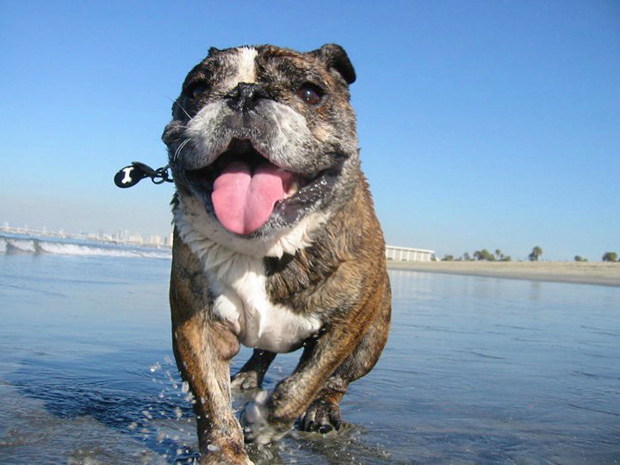
File photo.
The patella—what we commonly call the kneecap—slides up and down a groove between the femur and the tibia. It is attached to a muscle that flexes the joint and allows for smooth movement of the rear legs for walking and running.
When the groove is not deep enough, the patella slips to the inside—the medial—or the outside—the lateral—area of the leg as the rear legs are flexed. When the patella slips out, it prevents the leg from flexing, rendering your dog lame. Your dog now runs around on three legs.
This lameness might happen all of a sudden, or it might come after running or playing. The lameness might be temporary if your dog kicks its leg out straight and the patella slips back into the groove. Some dogs have such a shallow groove that kicking it out does not bring it back into the groove. These dogs will have a painful and chronic lameness, which can progress to arthritis.
This is a common problem in small-breed dogs, although it can occur in larger dogs as well. It is an inherited condition, so dogs with this problem should not be bred.
Luxating patella is diagnosed during a physical exam by one of our doctors. Correction of the problem is surgical, and the surgery has a high degree of success in correcting the problem. Radiographs are always indicated to look for other problems and let the surgeon see the degree of the specific problem in order to plan surgical correction.
Several different procedures can be performed, all depending on the size of your dog and the expertise of the surgeon. In one procedure, called the tibial tuberosity transposition, the top portion of the tibia is moved to correct the problem. This helps make the patella slide straight down the middle and not off to the side.
A wedge trochleoplasty can also be used to deepen the grove that the patella rides over to further prevent it from medial or lateral luxation. Imbrication sutures that overlap can also be used to tighten the tissue around the tibia and prevent it from luxating.
Healing usually takes place without complications in almost all cases, and your dog will soon be pain free without a limp to complicate matters.

